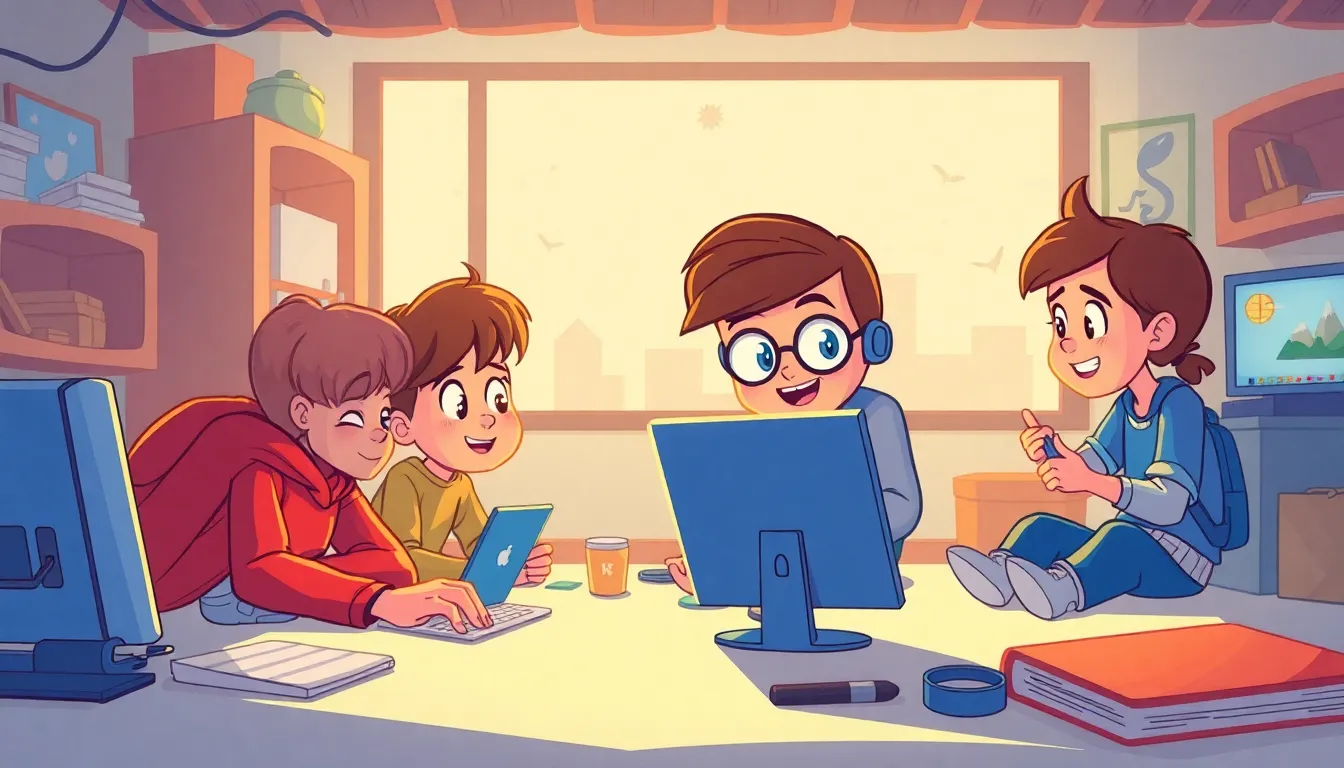
🌐 Stay Safe on the Internet: A Kid’s Guide to Cyber‑smart Adventures
Introduction
The internet is like a giant library mixed with a bustling playground—full of games, videos, facts, and friends from around the world. But just as you wouldn’t wander into a dark alley alone, you need to know how to stay safe online. This guide will teach you the principles (basic ideas) of internet safety, give you real‑life examples, and even let you try a mini experiment!
1. Guard Your Personal Information
What It Means – Personal information is any detail that can identify you: your full name, address, phone number, school, birthday, or even a photo of you at home.
Cause And Effect –
- If you share your address on a public chat, Then strangers could find out where you live.
- If you keep that info private, Then it’s much harder for a bad actor to misuse it.
Example – Imagine you’re playing a multiplayer game and a new player asks, “What’s your street?” If you answer, they could later send you unwanted mail or try to guess your password.
Did You Know? The word credential (pronounced “kreh‑den‑shul”) means any piece of information that proves who you are, like a username or password.
Tip: Treat every online profile like a secret diary—only share what you would be comfortable putting on a public billboard.
2. Create Super‑strong Passwords
A strong password is like a locked treasure chest. The tougher the lock, the harder it is for a thief to open it.
How To Build One:
- Length: Use at least 8 characters.
- Mix: Combine uppercase letters, lowercase letters, numbers, and symbols (e.g., ! @ #).
- Avoid: Common words like “password” or your pet’s name.
Cause And Effect –
- If you use “cat123” as a password, Then a hacker can guess it quickly.
- If you use “M0on!$ky7” (8+ characters, mixed), Then it takes much longer to crack.
Mini‑experiment:
- Write down three of your favorite words (e.g., “dragon”, “pizza”, “music”).
- Turn each into a password by:
- Adding a number at the front and end (e.g., “3dragon9”).
- Changing some letters to symbols (e.g., “dr@g0n”).
- Mixing upper‑ and lower‑case (e.g., “Dr@g0N”).
- Ask a parent or teacher to try guessing them. If they can’t, you’ve made a strong password!
3. Think Before You Click
Phishing – This is a trick where a message pretends to be from a trusted source (like a game company) and asks you to click a link or give information.
Example: You receive an email that looks like it’s from “Minecraft Support” saying, “Your account will be deleted! Click here to save it.” The link actually leads to a fake website that steals your login.
Cause And Effect –
- If you click the fake link, Then your account can be hijacked.
- If you pause, verify the sender, and ignore the link, Then you stay safe.
Quick Check:
- Does the message have spelling mistakes?
- Does it ask for a password or money?
- Does the URL (web address) look weird?
If the answer is “yes” to any, show it to an adult before acting.
4. Be a Kind Digital Citizen
Being safe isn’t only about protecting yourself; it’s
being about treating others nicely online, sharing good vibes, and standing up against mean behavior.
How to Be a Kind Digital Citizen
- Think before you post: Ask yourself if your comment is helpful and friendly.
- Respect privacy: Don’t share other people’s photos or personal details without permission.
- Speak up against bullying: If you see someone being teased or threatened, tell a trusted adult or use the platform’s “report” feature.
- Use positive language: Say “please,” “thank you,” and give compliments instead of insults.
Quick Quiz: Test Your Cyber‑Smart Knowledge
-
Which of these is the safest thing to do when you get a message asking for your password?
a) Reply with your password right away
b) Ignore the message and tell an adult ✓
c) Click the link and type it in
d) Forward the message to friends -
A strong password should:
a) Be your birthday
b) Use only lowercase letters
c) Include a mix of letters, numbers, and symbols ✓
d) Be the same for every account -
If you see a mean comment about a classmate online, you should:
a) Join in to be popular
b) Delete the comment and do nothing else
c) Report it and tell a trusted adult ✓
d) Share it with other friends
Now you’re ready to explore the internet like a cyber‑smart hero!